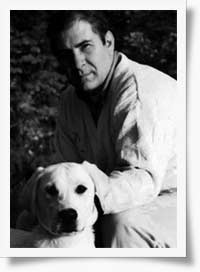 “There is a new America every morning,” Adlai Stevenson said, “and that new America is the sum of many small changes.”
“There is a new America every morning,” Adlai Stevenson said, “and that new America is the sum of many small changes.”
Every day, I am repeatedly reminded of this fact. This is not the country I grew up in.
I grew up in a time of hope and promise. Flush with the allies’ victory in World War II, America was coming into its own. We knew who we were, what we stood for, and who stood with us.
My youth was in an America where we knew our neighbors and didn’t see the need to lock our doors. Strangers were welcome and everyone came together for the Fourth of July. You were either in the parade or watching it…And sometimes both.
Walter Cronkite was the most trusted man in America. He and his colleagues on ABC and NBC, the only other channels, told us the evening news. They let the facts speak for themselves. There were no pundits sitting next to them, spinning the events and trying to tell us what to believe.
There were political disagreements to be sure, but they stopped at the water’s edge. We were united when it came to world affairs; confident in our allies and the institutions designed to protect the world order we had helped create.
The political parties were well defined. You belonged to one party or the other, but there was broad agreement about where we were going as a society. The only real question was how to get there. The disagreements were about tactics not goals, the means not the end.
For the first half of my life, Republicans were closely aligned with the cause of civil rights. They took their history seriously and the relished the responsibility that came with carrying Lincoln’s mantle.
In 1960, the year of Kennedy and Nixon, the Republican’s platform declared: This nation was created to give expression, validity and purpose to our spiritual heritage — the supreme worth of the individual. In such a nation — a nation dedicated to the proposition that all men are created equal — racial discrimination has no place.
Meanwhile, Democrats struggled with their party’s internal contradictions on this issue and fought to find a unifying identity. When Kennedy failed to submit a promised civil rights bill, three Republican Senators introduced one of their own. They challenged Kennedy and forced him to deliver on his promise.
The promised legislation became The Civil Rights Act of 1964. It is worth noting, it passed the House with support of only 61 percent of House Democrats. Eighty percent of the Republicans supported it.
But that would soon change. Passage of the Civil Rights Act fundamentally altered both parties.
When he signed the Civil Rights Act, Lyndon Johnson told his aide, Bill Moyers, “I think we just delivered the South to the Republican Party for a long time to come.”
He was right.
Two months after passage of the Civil Rights Act, a key Democratic foe of civil rights, South Carolina Senator Strom Thurmond, switched his party affiliation and began working to remake the Republican Party so that it could appeal to Southern white voters. Thurmond – and the segregationists who followed him – developed the “Southern strategy” that transformed Republican politics.
Democrats reacted by becoming the party of everyone else. To this day they claim there is room for everyone under their ‘big tent’, but a party that stands for everything too often stands for nothing.
It is beyond strange that time has somehow converted the Democrats into the more conservative party – dedicated to conserving social security, Medicare and other social advances over the last five decades – while the Republicans are behaving like the radical party bent on dismantling long-standing institutions of government and social reforms revolving around health care, poverty, women’s rights, and gender equality.
A democracy is, in Lincoln’s words, a government of the people, by the people, and for the people. By and large, that no longer exists.
Our society is increasingly becoming a plutocracy – a government of the rich, by the rich, and for the rich. These are people with no fixed political persuasion. They are opportunists who will support whoever supports them. Their singular motivation is the desire to preserve and increase their wealth.
Small wonder politicians as far apart as Bernie Sanders and Donald Trump found common ground in railing against Wall Street in 2016. Speaking to totally different constituencies, they both struck a responsive chord when they said the system is “rigged.”
This is the new America – fractious, hyper-partisan, increasingly isolationist, and self-serving. It is an America where families often can’t talk together, neighbors don’t trust each other, strangers aren’t welcome, and fear prevails.
America has changed. The one certainty is that it will change again. The only uncertainty is degree and direction.
America is always a work in progress. America is becoming. America is a promise. America is an ideal to cherish and a dream to pursue.
America began with a claim of responsibility and recognition – the declaration: “We the people.” Every day, we must decide what we want America to be and act accordingly.
Nearly half of those eligible to vote in 2016 – over a hundred million people – didn’t vote. As we approach the mid-term elections, we must be mindful that those who don’t vote let those who do decide for them.


Thank You Bill,
Mary Pellettieri
Well said Bill. I can only say it is a very scary “America” we live in, not like the one we grew up in. I am scared for my children, grand children and great grandchildren.
Hope you are doing well.
Louise Wooden-Hamilton